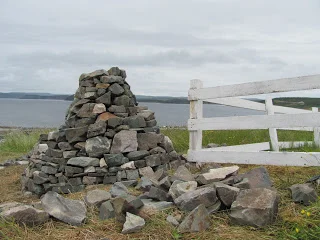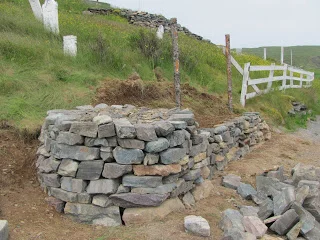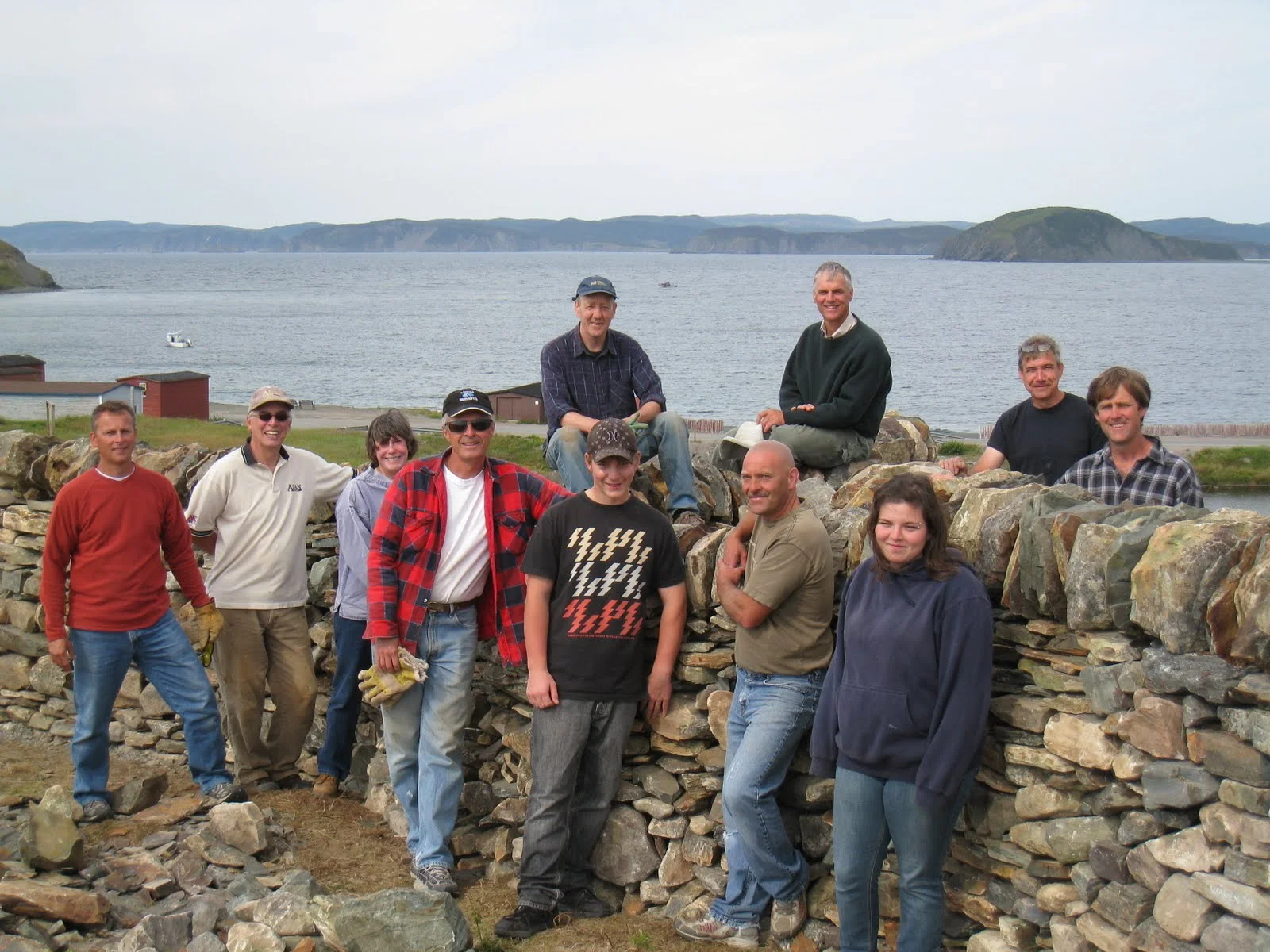The English Harbour fog machine has been churning out invisibility for a solid 24 hours. Before I arrived here a week ago the southwest wind that funnels moisture off Trinity Bay into the land bowl above the harbor had kept the village cloaked in a cotton wool shroud for fourteen days. Fortunately, the recently concluded environmental art workshop maintained blue skies above for each and every one of its five days. There were long-distance views in every direction from the headlands where the six participants worked on their dry stone installation.
Read MoreReflecting on the recently completed 2-day workshop at English Harbour Art Centre, I begin to see that perhaps the most useful function I perform as a walling instructor is offering permission to those in attendance to try something new. For a participant, the workshop setting is a green light at an intersection that otherwise would be blinking red. Because the building site has been prepared with footings dug, guidelines strung and stones laid out on the ground, around, the usual impediments to getting started building a wall have been removed. A participant feels free to act and is encouraged to begin.
Read MoreA collaborative design process culminating in the hands-on creation of a dry stone structure. Instruction in design will include site assessment, 3-D modeling and guide frame set up. Instruction in building with loose stone will include identifying each stone’s best use, applying the four basic principles for strong construction, and practicing safe methods for shifting and lifting stone. One day of the workshop will be devoted to working in nature to create a temporary environmental art piece.
Read MoreThe dates have been set for the two English Harbour Arts Centre workshops I will be instructing this coming summer. Five-day and two-day long courses, July 29 - August 2 and August 4 -5, will focus on constructing new dry stone walls on the grounds of the art centre. The finished works will represent pieces of a grand puzzle that EHAC hopes to realize in the near future. The dream is to build a dry stone maze on the majestic headlands of Trinity Bay.
Read MoreThe dry stone workshops at English Harbour have been treated to buffeting winds, lightning storms, muffling fog and dazzling sunshine over these past two weeks. Participants have gone from working in tee shirts to suiting up in insulated rain-gear. Whatever the weather conditions of the day (or hour) it’s been exhilarating working on the Newfoundland coast. The wide vistas of boreal forestland and ever-changing seascape have made a dramatic backdrop to our dry stone activities.
Read MoreWhile other parts of Canada are experiencing record high temperatures, here on the east coast of Newfoundland we go about in wool sweaters and windbreakers. Lightning storms have made quick visits overhead in the nighttime. Strong winds blow intermittently through the day. But always, in the past week, there has been fog. Time stands still when the quality of light remains the same from dawn to dusk. It’s the color of pewter tinged with green from the landscape of meadow grass and spruce forest. And always the mournful moan of the foghorn in the background calling out from the coastal headlands; a sound I don’t so much hear, as feel in my body like the rise and fall of a breath.
Read MoreSince my arrival in English Harbour under clear blue skies three days ago, the fog has crept in and kept our dry stone walling workshop blanketed in degrees of gray. However, the enthusiasm of all six participants has been nothing less than rainbow bright. They started out on Monday brainstorming their way to a design and plan of attack to begin building the first of four corner features for a new fence around the arts centre. On Tuesday they completed a six-sided base for a stone lantern and a short length of retaining wall. Today we’ll keep a watch out for whales. Maybe the three humpbacks that were feeding on capelin in the harbor on Monday will be back.
Read MoreCultivated land is a handmade environment. In centuries past, the face of Newfoundland was shaped by domestic agricultural activity. While many of the stone walls built during those times have lost their stature as fences, their presence remains a defining characteristic of the land. The close attention that farmers paid to their surroundings is comparable to the awareness artists bring to their work. Dry stone construction is a logical medium of expression for an artist working in the landscape.
Read More






